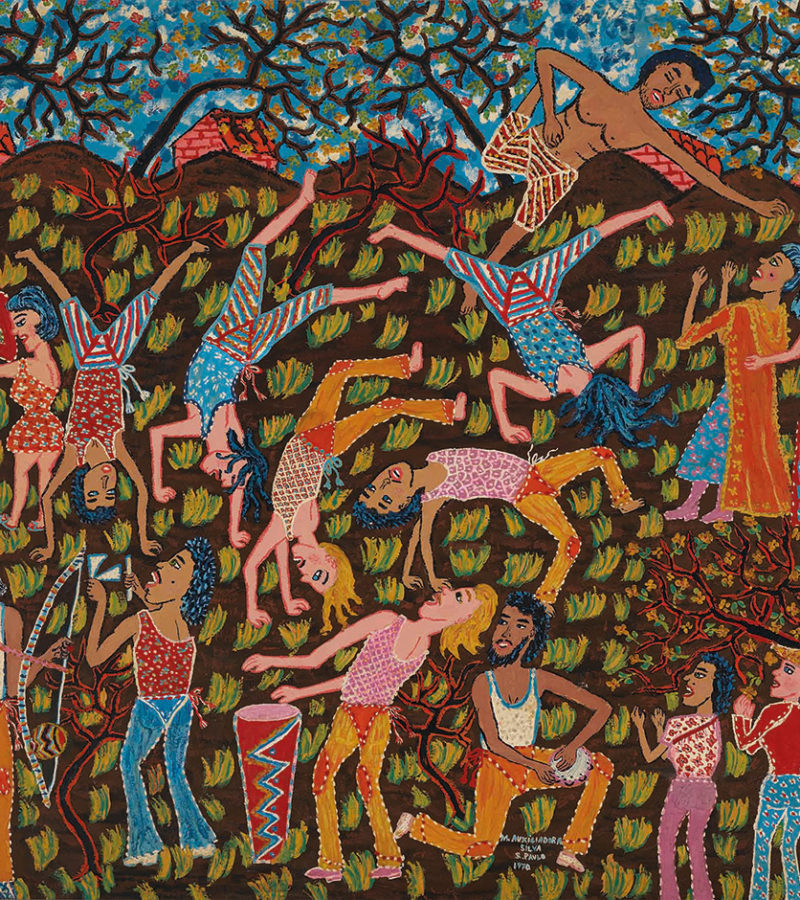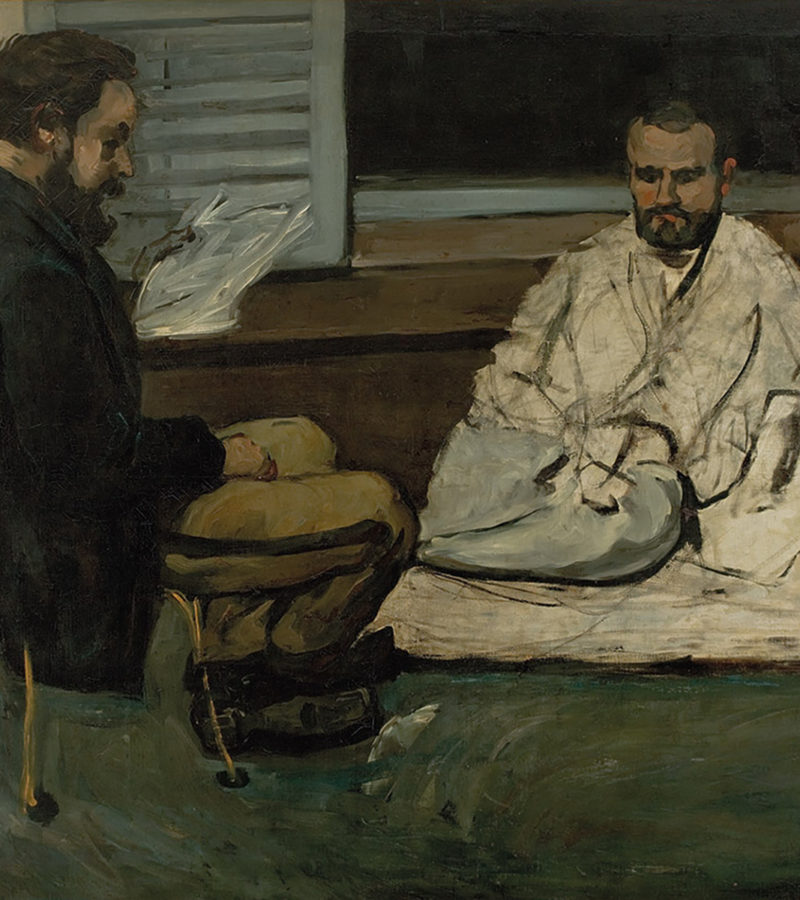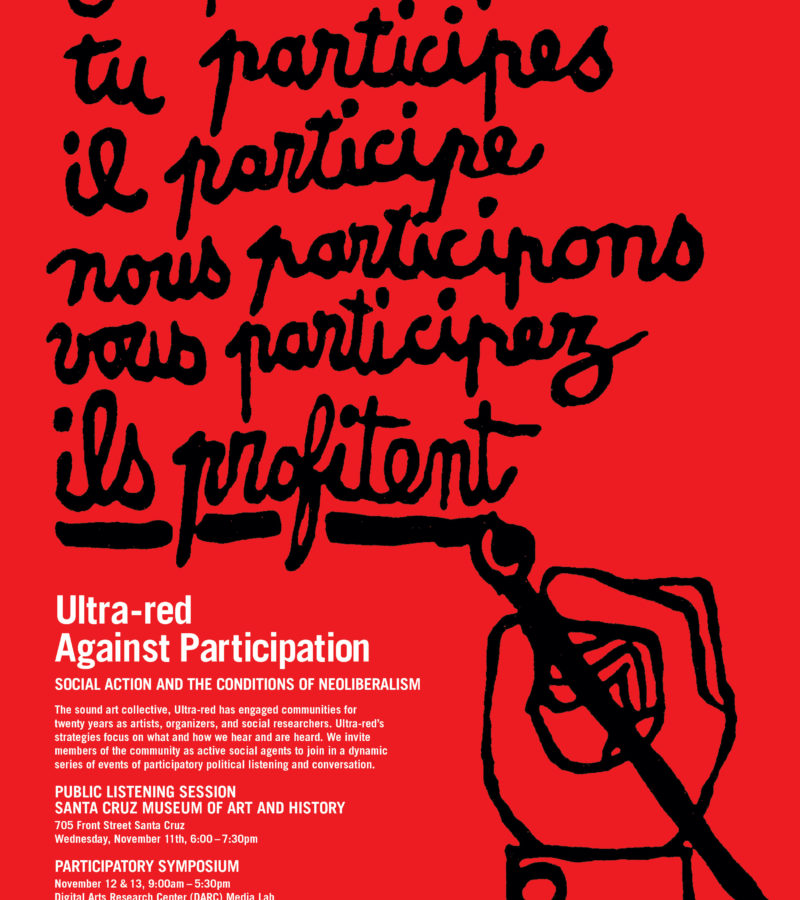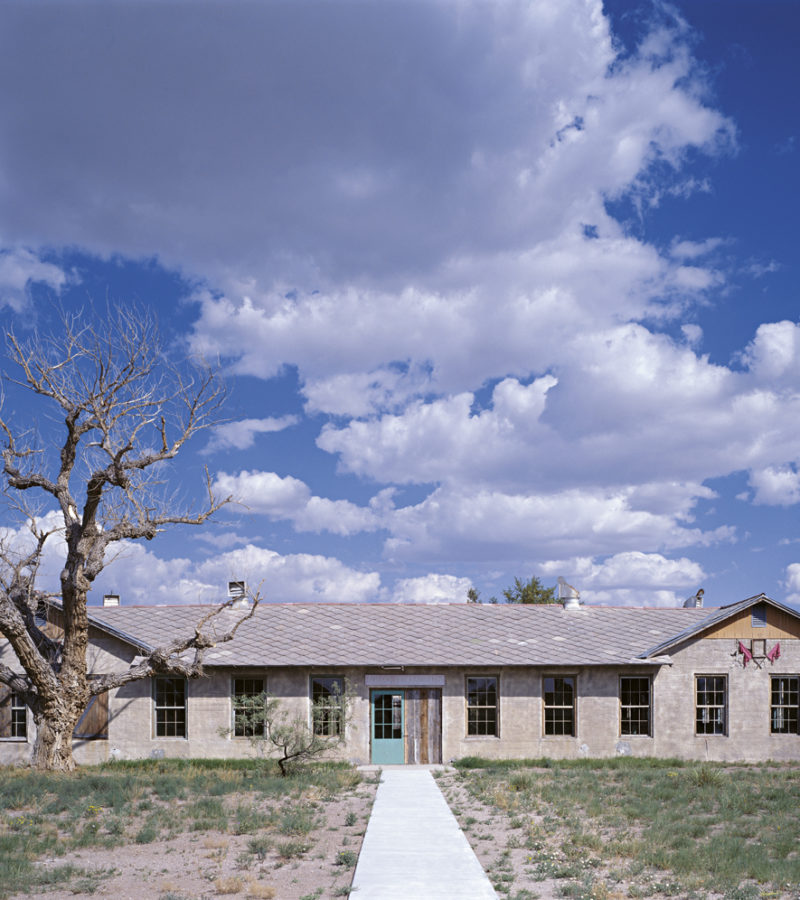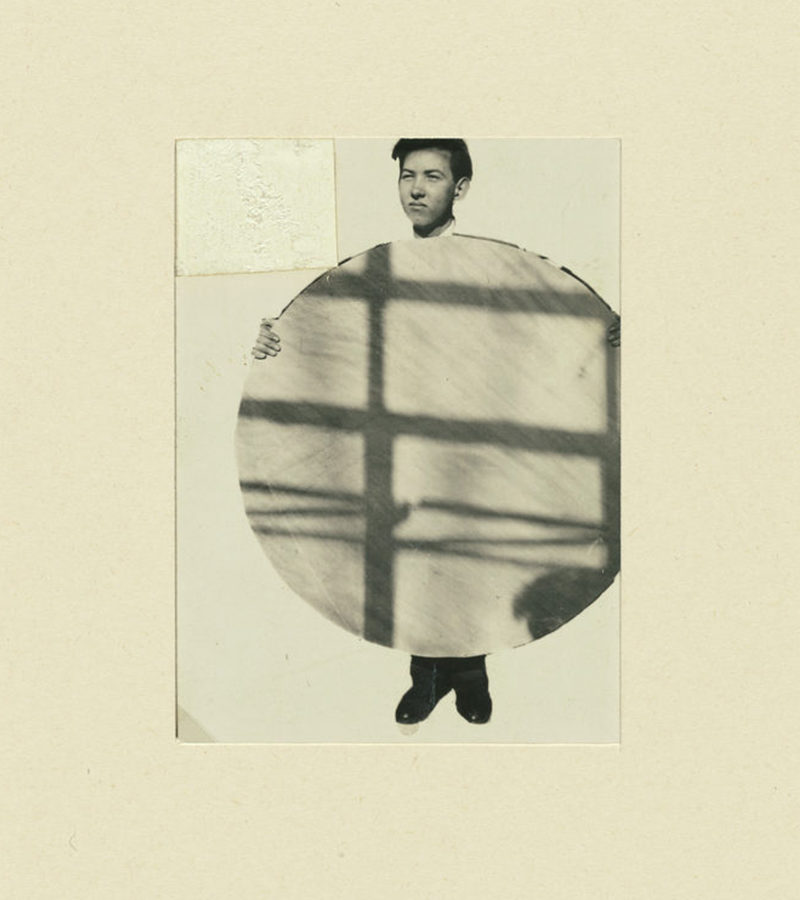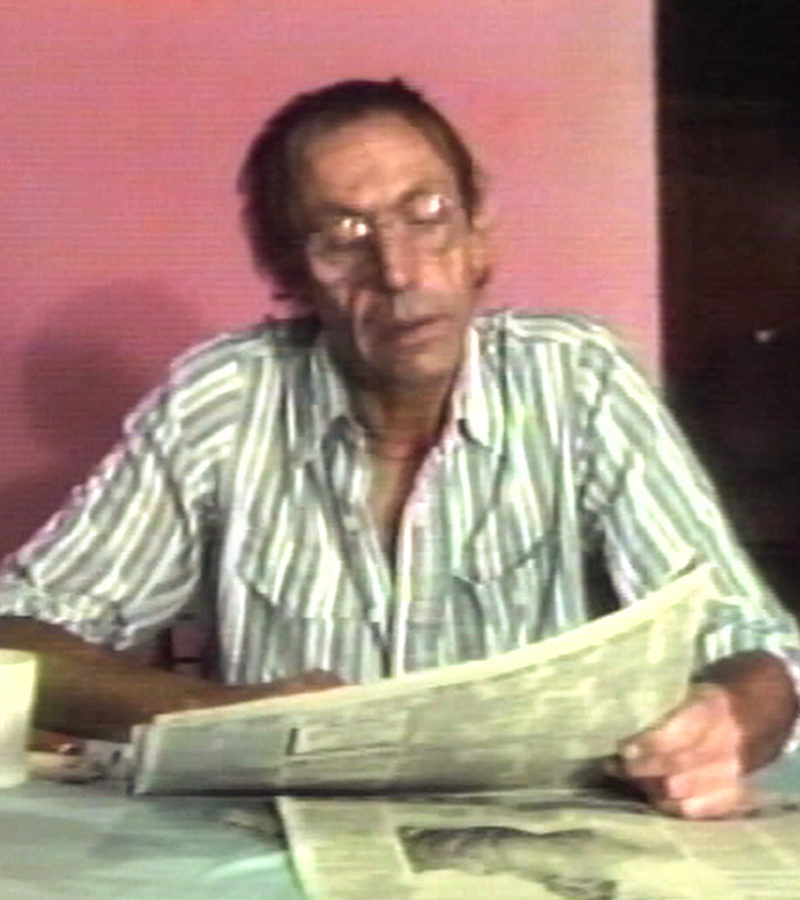Late morning on an early summer’s day: a large, round swing hangs unused from a domed red metal frame, while that morning’s washing – blue jeans, a towel, a red skirt – sits pegged on the antennae of a drying rack nearby. A seagull lifts from the grass, crossing over a worn dirt path to settle on the other side near a blackbird picking about at the foot of a plane tree. The sun plays through the leaves, as an older man goes for walk with a pair of trekking poles along one of the broad roads that grid what seems to be a landscaped park area, enclosed on all sides by buildings five or six stories high. The buildings are dotted with square windows, their concrete façades coloured in swathes of faded yellow, blue, pink, green and purple, broad abstract pastel shapes butted with lines of pebbledash.
A small procession winds its way through this serene scene: four young women, all wearing a uniform of blue jeans and champagne pink tops, carry between them two sheets of purple-tinted glass. They walk straight-faced, taking their time, pausing occasionally to adjust their grip. Down one stretch of road at an underpass they meet up with another group: another five young women, these perhaps slightly younger than the first, all wearing their own uniform of matching shorts, T-shirts, and shoes, in the same shade of champagne pink. In an awkward ceremonial moment, the first gang hand the panes of glass over to the second and, loaded with this unwieldy cargo, they head back up the way they came.
The group is tied to their surroundings: their outfits match the shades of pink striping the buildings and the flowers sprouting from bushes on the side of the road. The purple panes they carry reflect glimpses of the sky and the tops of the buildings; they mirror the countless windows all around them, the shade bouncing off a hanging towel, the canopy of a garden umbrella, the lavender growing in a stone raised bed. They echo purple loops of ‘036’ graffiti we can see tagged on the underpass. Even the netting that covers a set of green bins pairs with the fishnet stockings that a few of the second group wear. This, it is made quietly clear, is their territory.
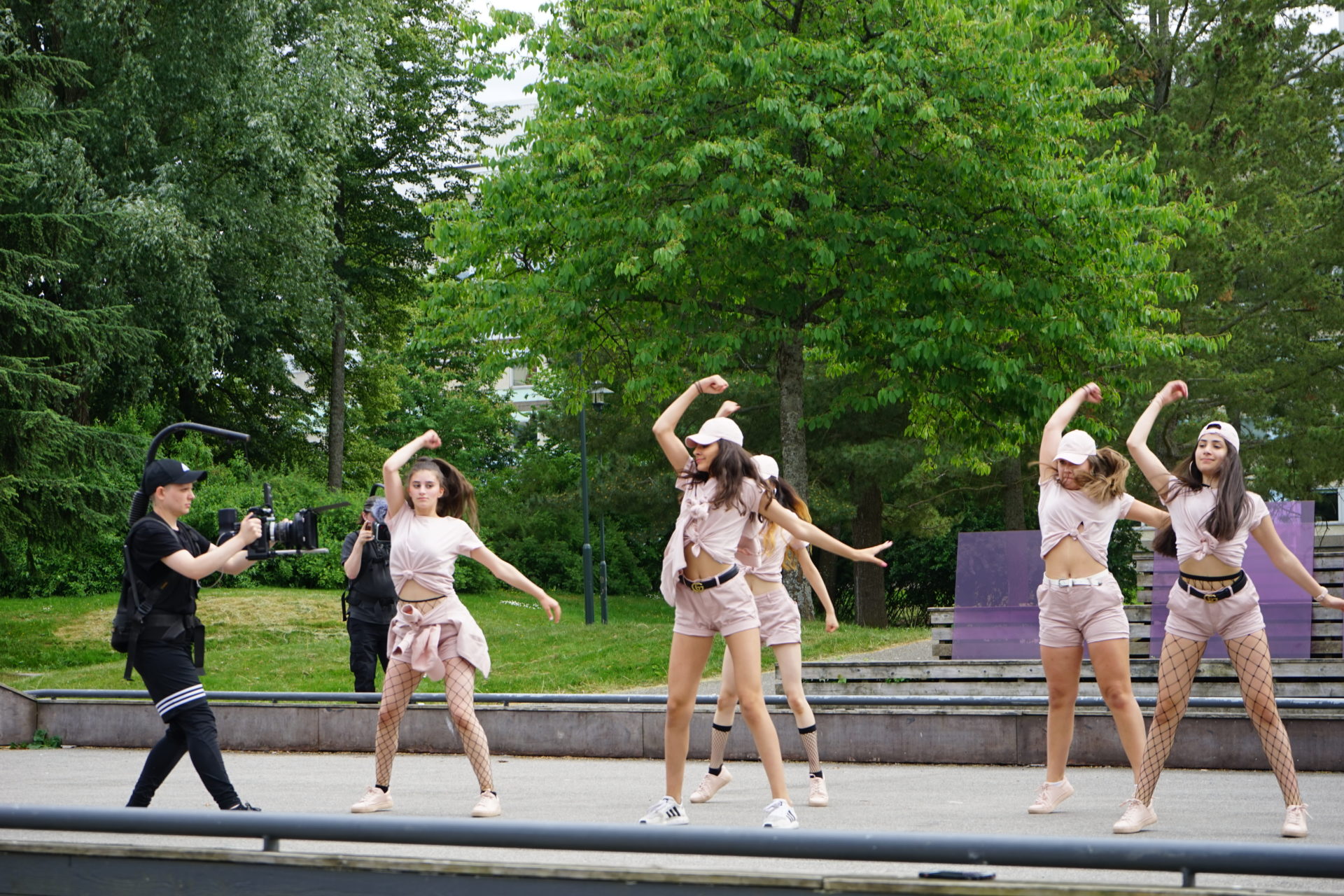
The combined gang of nine make their way to an outdoor basketball court – en route, the panes of glass have somehow multiplied to five, totalling seven by the time they set them down on the wooden seating that lines the court, a new audience that will witness a short, punchy dance routine. Finally letting loose, with a kick of the air, the gang then disperses, leaving the purple glass to sit there.
Johanna’s Billing’s In Purple (2019) is, on the initial approach, a combined document of a performance and music video, following the pink dance troupe’s actions across the park. The footage itself, however, tells a different story: the young women we’re ostensibly following are only on screen for just over half of its 12-minute duration. The audience spends almost as much time looking at the mutedly colourful concrete fronts, the trees and shrubs that line the walkways, the occasional other pedestrians, the seagulls and ravens that hop along the grass. The piece traces a trajectory, starting in the quiet of an indoor basketball court, culminating in release at an outdoor one; the only spoken words we hear are fragments, a few incomprehensible murmurs. The video is, undoubtedly, a document of choreographed movements – movements that are immediate, rhythmic and joyful, but the dance routine itself is only a minute and a half long. Beyond the routine are movements that are slower, invisible, even absent; movements that are human, but also vegetal and aviary, urban and architectural, bureaucratic and technological. While In Purple is, very simply, based around some people dancing, around those people is a wider choreography of how space is shaped, planned, and the various ways it can be, and is actually, used.
The instances of dance – both the young women’s slower procession of glass and their quicker side-steps and throwing of limbs – are playful, almost casual, uses of public space. At one point, one of them bends to kiss hello to an older woman on the promenade, and we catch a brief instance of three girls standing courtside, watching the dancing, gently trying to follow along and learn the moves, but, by and large, their performance seems unremarked upon, without any audience other than the propped up panes of purple glass, the camera and themselves. By the time the driving beat of the music stops, the women seem content, confident, relaxed. It’s a casualness that belies both their situation and how it’s more widely perceived; writing and thinking around how people use public space tends to focus on either adults or children, not teenagers or young adults. Questions of leisure and play lean towards either team sports – like basketball or football – or playgrounds, which provide the majority of the background in the video. Thinking around, adapting and making new use of space more often takes the form of broader gestures of protest and occupation. The ‘claiming of space’ is an image associated with the squares of Cairo, Istanbul or New York City, not the Swedish suburb that is the setting for In Purple. The suburbs are often depicted as monocultural, or, rather, a-cultural oases of white families escaping the city. Young women, furthermore, are typically represented in terms of their sexuality, and even in ostensibly radical forms of representation are rarely considered beyond that in and of themselves. The anarchist group Tiqqun’s theoretical diatribe Preliminary Materials for a Theory of the Young Girl (1999), for instance, isn’t actually about the young girl.[i] In Purple points to the intersection of young women and suburban public space that evidently exists, but has yet to be written into any cultural discourse.
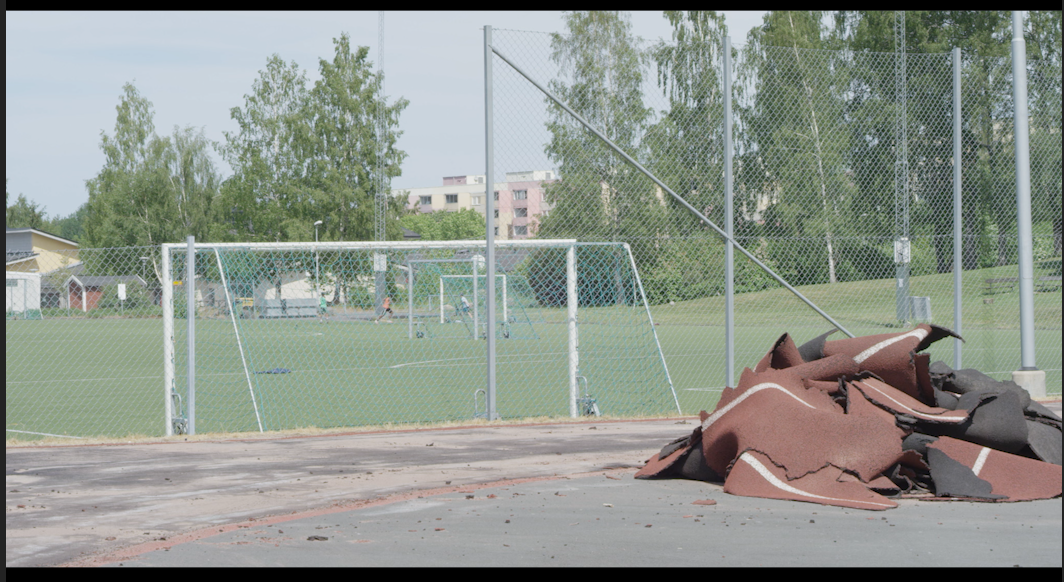
In the anthology Prismatic Ecologies (2013), a set of writers attempt to theorise new approaches to understanding the human relationship to surroundings according to the colours of the rainbow. In the chapter on ‘violet-black’, eco-feminist theorist Stacy Alaimo equates the dark purple colour with the abyssal zone of the oceans – the deep-sea areas that, despite evidence to the contrary, are culturally assumed to simply be empty, a void. In the parts of the globe where most light doesn’t penetrate, violet-black stands for what is beyond the scope of what is normally visible to the human eye, but also becomes a ready metaphor for awareness, attention, a willingness to look; purple is an ‘abyss of concern’.[ii] In Billing’s video, purple is similarly a signal of an unconsidered gap, a highlighting of what takes place in the supposed abyssal sprawl of the suburbs. These young women make use of the purple of their environment, but is it camouflage – to try and blend in, or an attempt at accenting – to stand out?
The visual cues of In Purple signal a bond to a specific environment, but also to how these women are not necessarily defined by that environment. Instead, their use of colours highlights all of the bubbling forces that have led them to this particular moment that has been captured. The concrete buildings that surround the women, built in the late 1960s and early ’70s, were painted their pastel colours in the ’80s as an act of regeneration, a means of painting over – whitewashing – the social issues that were arising from such planned housing developments. Given the compound words that have arisen from ‘good’ gestures used to mask inequalities and injustice – greenwashing, pinkwashing, artwashing – perhaps here we might consider purplewashing as an attempt to highlight this kind of washing itself, to point out the brushing over and ellipses taking place. You might not be able to wash the washing, but attention can be called to it. Although the dance troupe in question exists, and might be lauded by its own community, the young women remain unsupported; the contingent use of public space at play here suggests that the performance we’re seeing can only ever be a fugitive one. Purplewashing is a temporary, ambiguous position – one that only those in a transitional, overlooked position can articulate, however momentarily. These young women decide to make a scene, to unashamedly take up space to dance. Their performance is a mix of styles that is sassy, forthright, but also all too brief and – in the competitive realm of urban dance – relatively understated.[iii] Then it is gone; only for it all to start again. The looping of the video turns it into an incessant rehearsal of claiming space; an emergence, a quiet explosion, a retreat, then repeat.
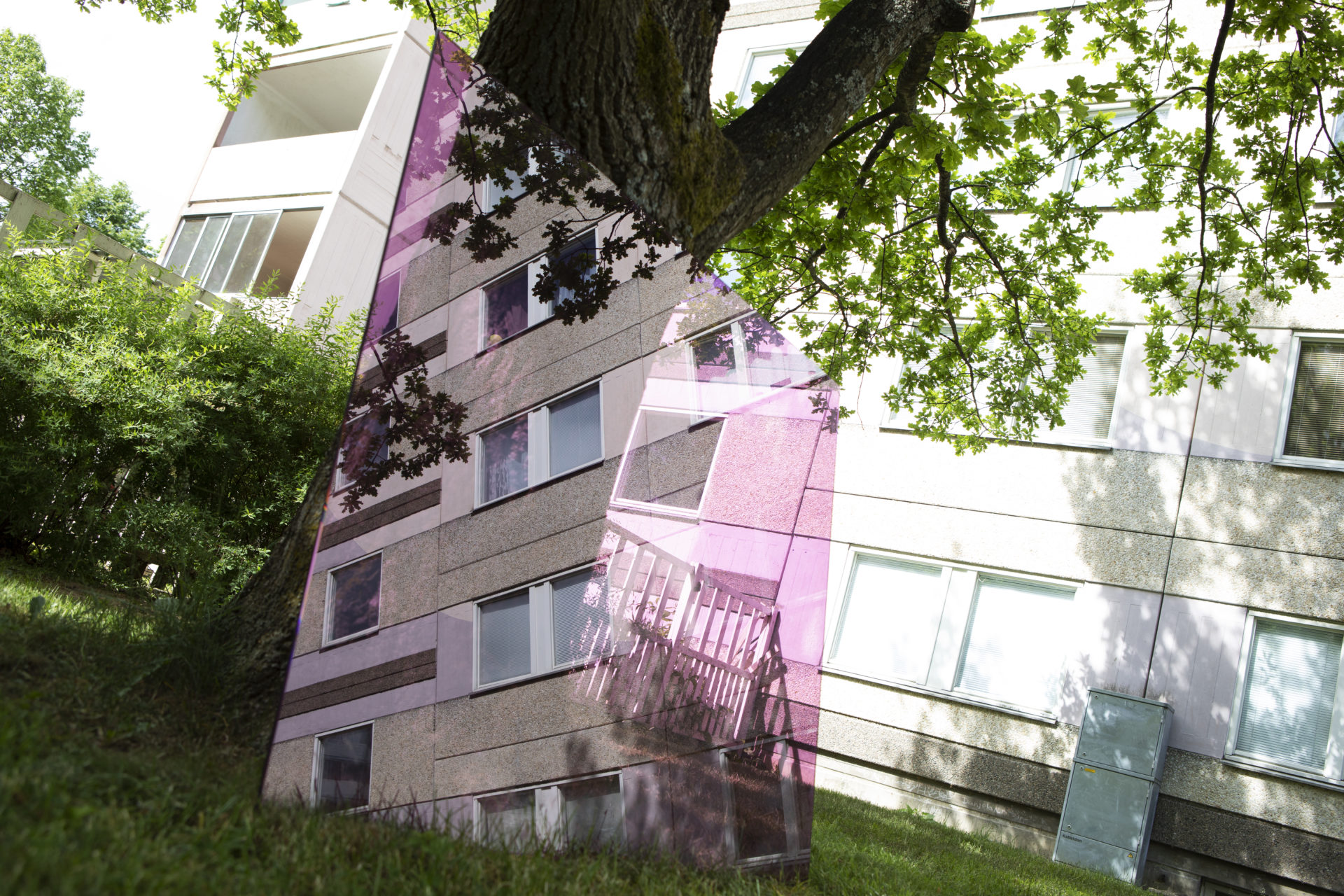
Underlying their shuffling and side-steps are insistent questions. What is culture in a suburban abyss? How does anyone form an interest, a trajectory, a self, a society, when they are told they are from nowhere, not considered part of any wider narrative? Billing’s video is a platform that lets us see how these young women organise and perform for themselves for one morning. Purplewashing is a tool – the exact colour of which might change from place to place – to flag up the bullshit, the hypocrisy, gaps and contradictions that are all too apparent to the young, and where they apparently recognise their own means to teach themselves.
In her conclusion on colour, Alaimo states optimistically: ‘We can only hope that violet-black compositions will, somehow, catalyse concern for creatures and habits we can barely begin to imagine’.[iv] The purple in Billing’s work is a bit more wary. Still, the wandering gaze and merging soundtrack of In Purple suggests dance as a means through which, even temporarily, to merge bodies and space. The young women’s purple composition is fleeting and speculative. It posits, perhaps, the tentative idea that their use of outdoor space, their sense of what is public, the architecture of play, social support networks, society itself might catalyse concerns for new spaces, new selves and new choreographies that we might not have begun to imagine, but that are already being enacted.
Further Reading:
Gabriela Burkhalter, ‘When Play Got Serious’, Tate Etc, issue 31, Summer 2014, available at https://www.tate.org.uk/tate-etc/issue-31-summer-2014/when-play-got-serious.
Celine Condorelli, ‘Life Always Escapes’, e-flux journal, no.10, November 2009, available at https://www.e-flux.com/journal/10/61357/life-always-escapes/.
Dolores Hayden, ‘What Would a Non-Sexist City Look Like?’, Signs, vol.5, no.3, 1980, pp.S170–S187, available at https://www.jstor.org/stable/3173814.
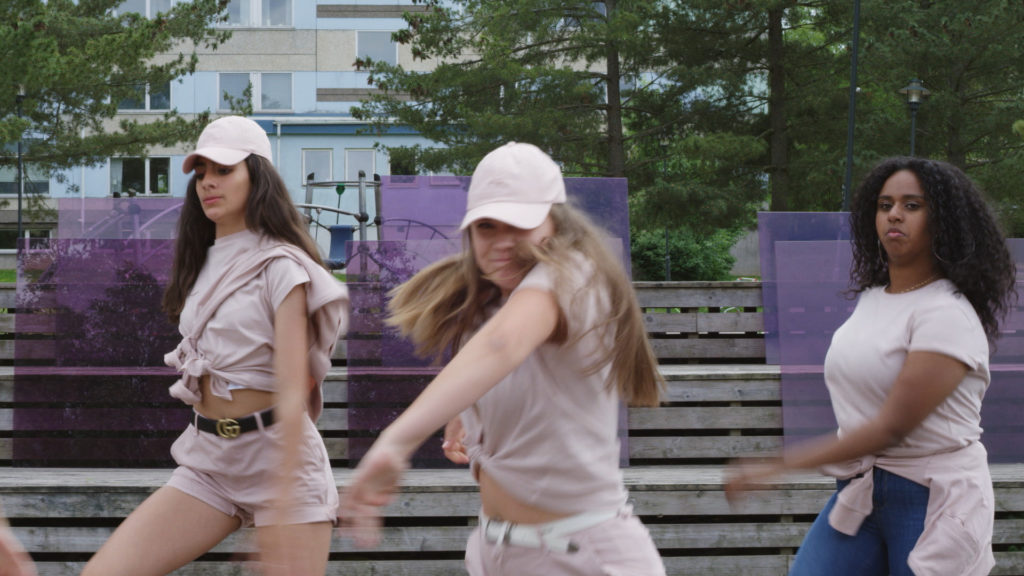
- 1. See, for example, the range of worked depicted in Ben Highmore (ed.) The Everyday Life Reader, Routledge, 2002), Colin Ward’s The Child and the City (1978), Gavin Brown and Kath Browne (ed.) The Routledge Research Companion to Geographies of Sex and Sexualities, and Paul Routledge’s Space Invaders (2017). Tiqqun’s figure of the Young Girl is as a stand-in archetype to imagine capitalism’s internalized projections of identity, see Tiqqun, Preliminary Materials for a Theory of the Young Girl, 1999 (published in English in 2001, later published by Semiotext(e), trans. Ariana Reines, 2012).
- 2. Stacy Alaimo, ‘Violet-Black’, in Jeffrey Jerome Cohen (ed.), Prismatic Ecologies, University of Minnesota, 2013, p.233.
- 3. The young women’s use of pink, and the extent to which they are shaping their own take on gender performativity is a larger issue for discussion elsewhere; see, for example, Amber Jinser’s Performing Motherhood (2013) for a discussion of how competitive dance routines can shape understandings of gender and sexuality, for both the performers and the audience.
- 4. Alaimo, ‘Violet-Black’, p. 249.
